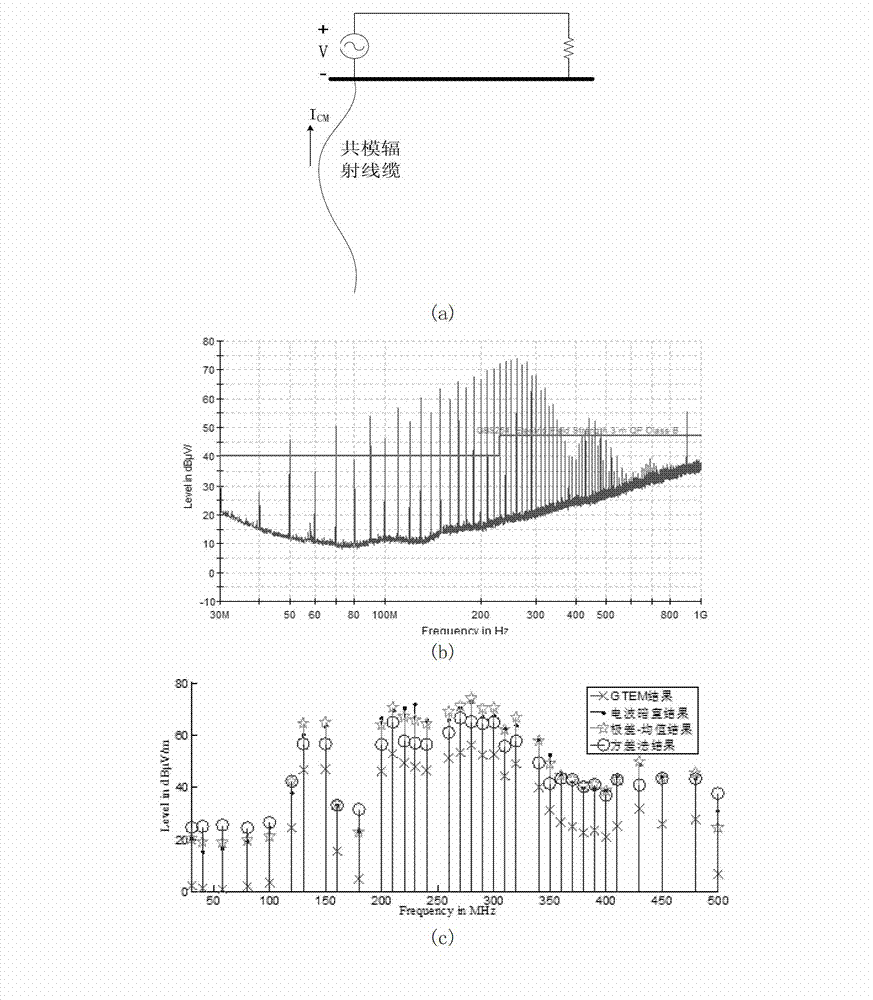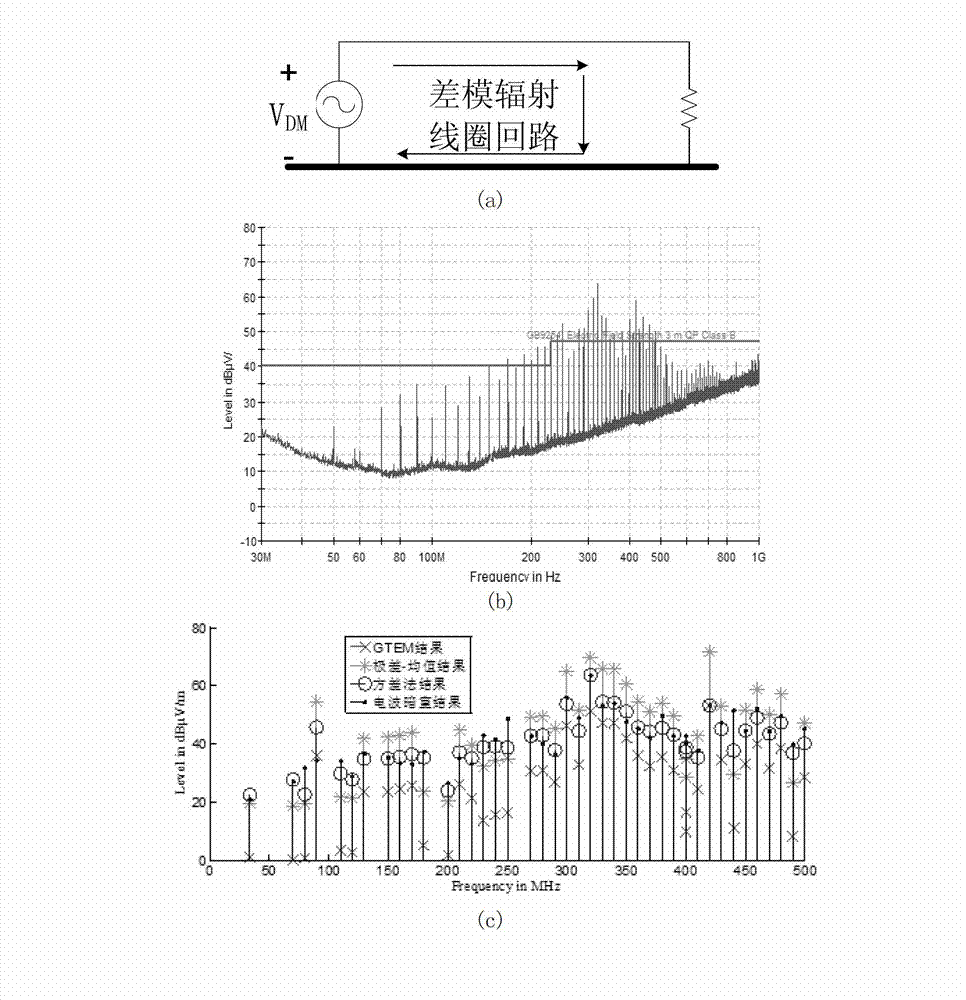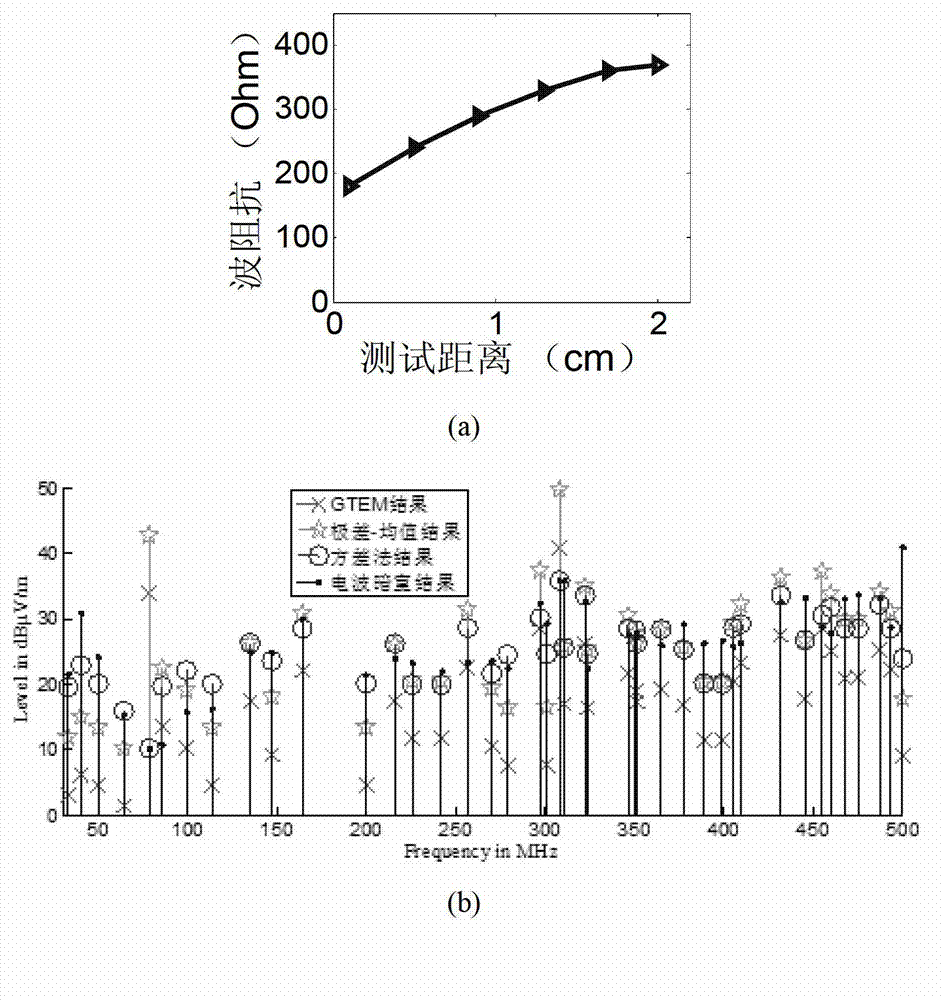GTEM cell radiation EMI (electro-magnetic interference) test method based on radiation source characteristic
A test method and radiation source technology, applied in the field of radiated EMI testing of GTEM cells, can solve the problems of no noise source classification and low accuracy, and achieve the effect of improving the accuracy of test results
- Summary
- Abstract
- Description
- Claims
- Application Information
AI Technical Summary
Problems solved by technology
Method used
Image
Examples
Embodiment Construction
[0014] The present invention will be described in further detail below in conjunction with the accompanying drawings and specific embodiments.
[0015] In the application of the GTEM cell to measure electromagnetic interference noise, it is necessary to convert the data measured by the GTEM cell into an equivalent open field or anechoic chamber test field strength value. The research on the GTEM cell as a radiated EMI test device mainly includes: total power method, Wilson and Lee, these three correlation algorithms. Among them, the Wilson algorithm is developed on the basis of the total power algorithm. For an electrically small-sized radiator, the components of the radiation field strength in the three directions of x, y, and z can be calculated using the electric dipole moment and magnetic dipole moment to describe. Taking the x direction as an example, the radiation electric field component of the measured object in the far field can be expressed as:
[0016] ...
PUM
 Login to View More
Login to View More Abstract
Description
Claims
Application Information
 Login to View More
Login to View More - R&D
- Intellectual Property
- Life Sciences
- Materials
- Tech Scout
- Unparalleled Data Quality
- Higher Quality Content
- 60% Fewer Hallucinations
Browse by: Latest US Patents, China's latest patents, Technical Efficacy Thesaurus, Application Domain, Technology Topic, Popular Technical Reports.
© 2025 PatSnap. All rights reserved.Legal|Privacy policy|Modern Slavery Act Transparency Statement|Sitemap|About US| Contact US: help@patsnap.com



